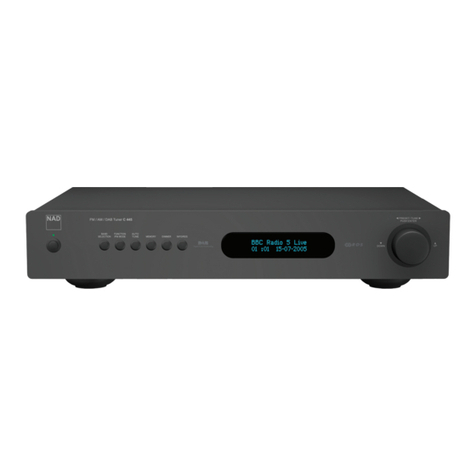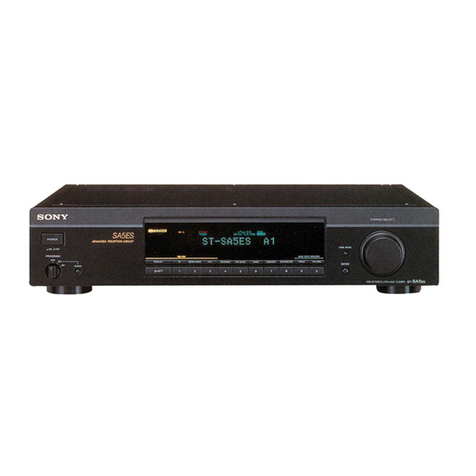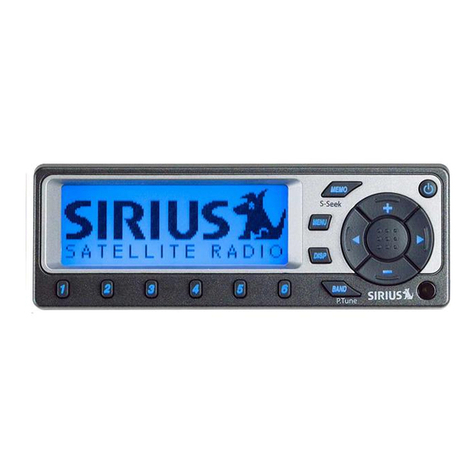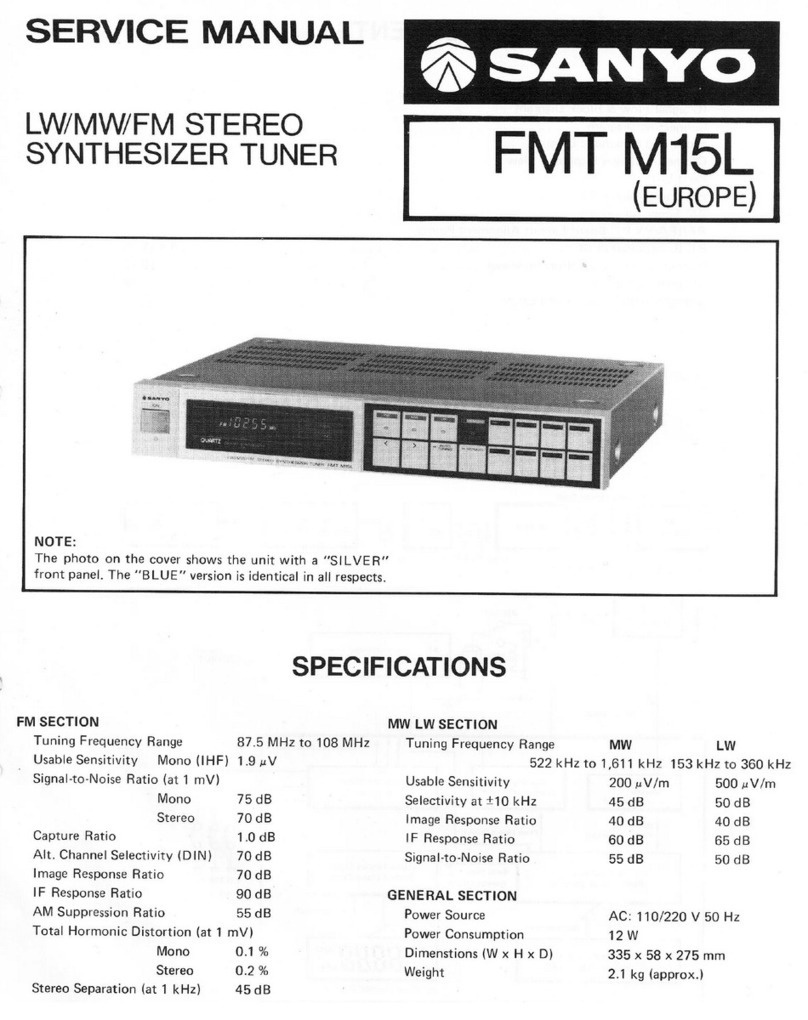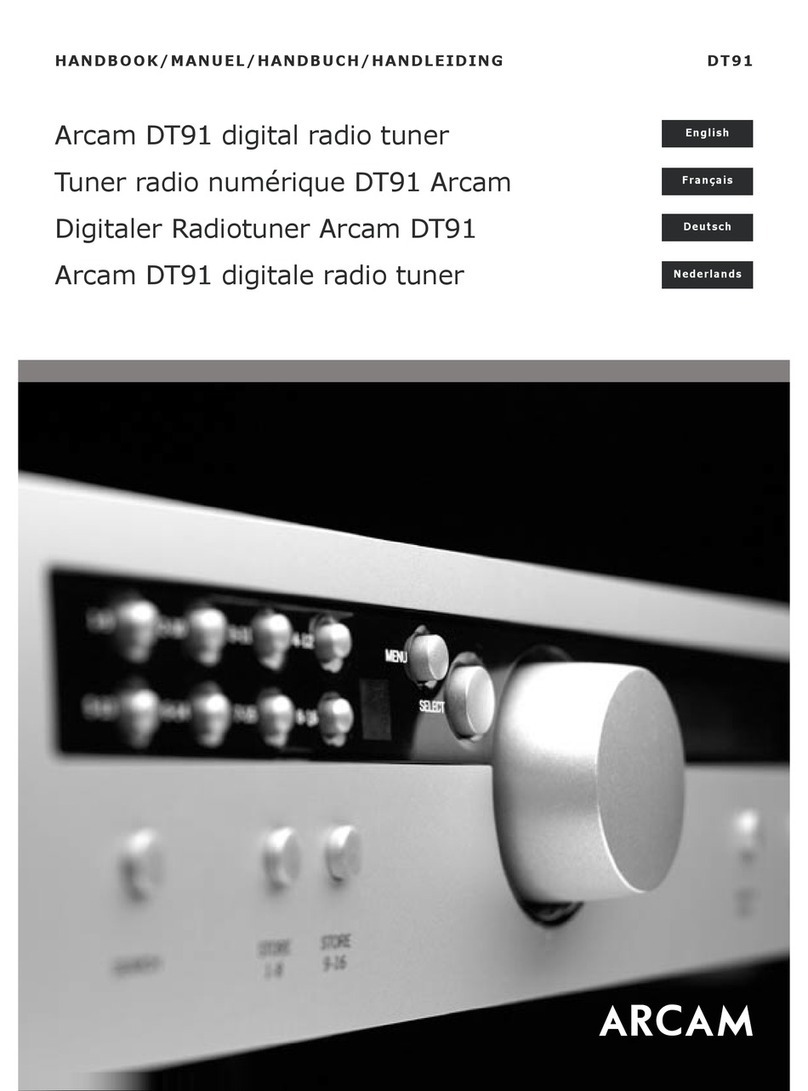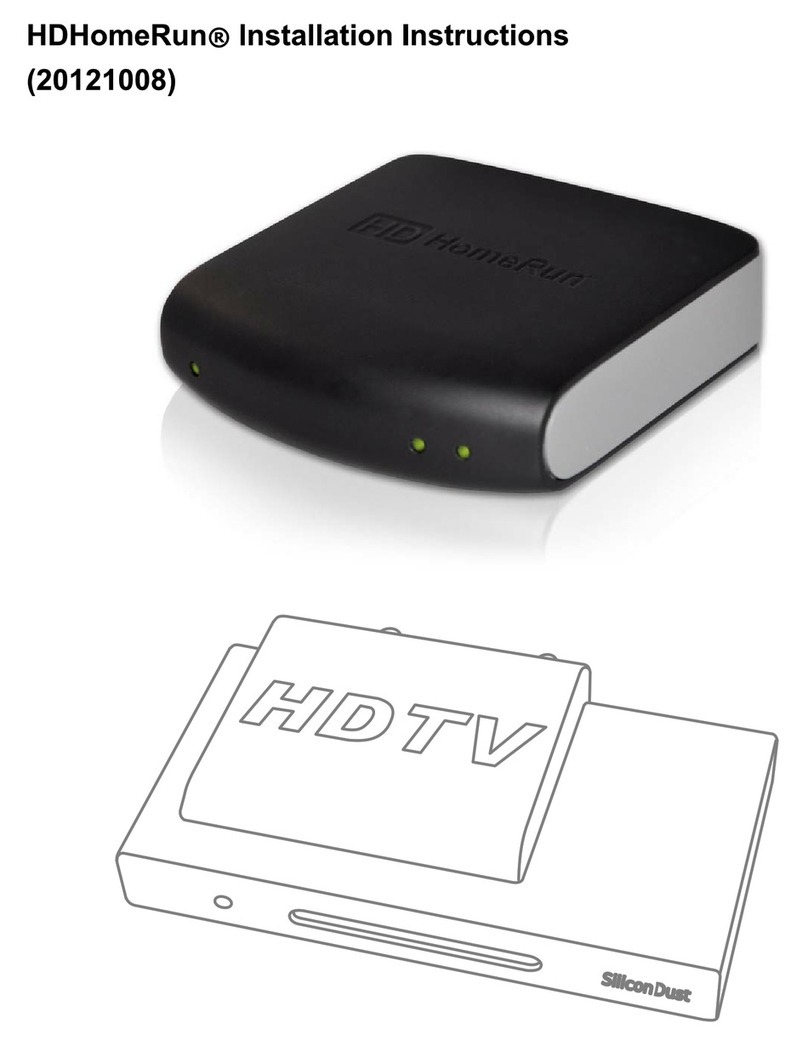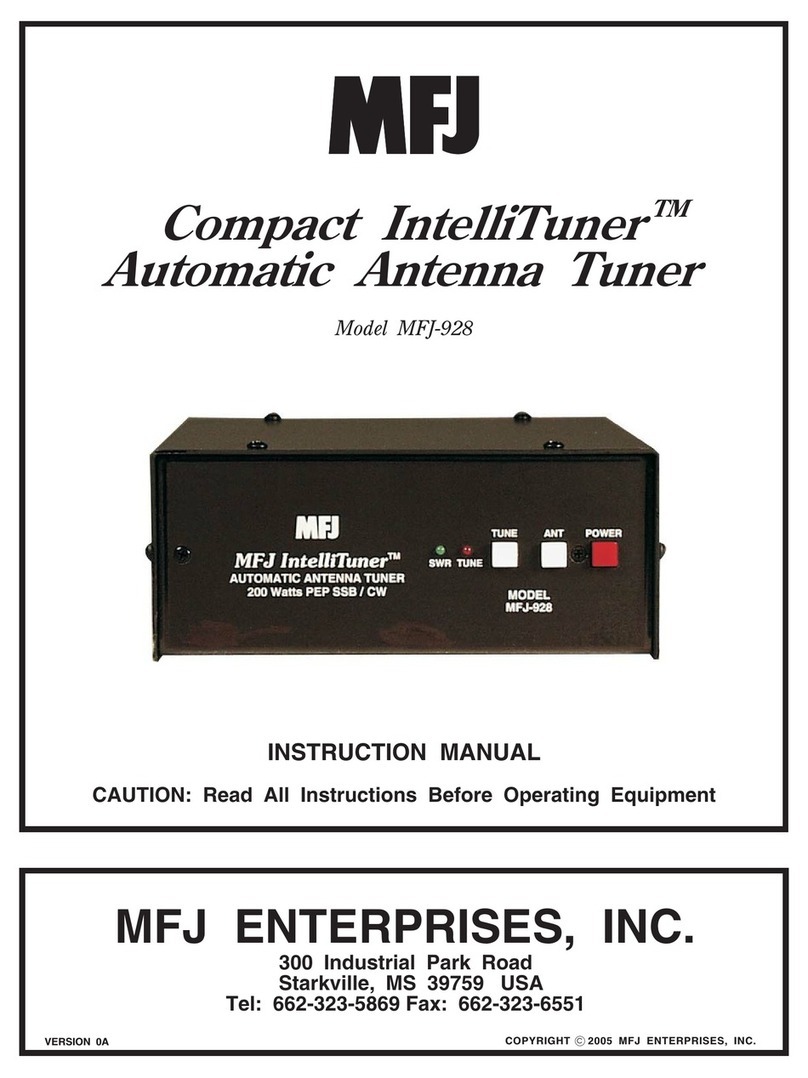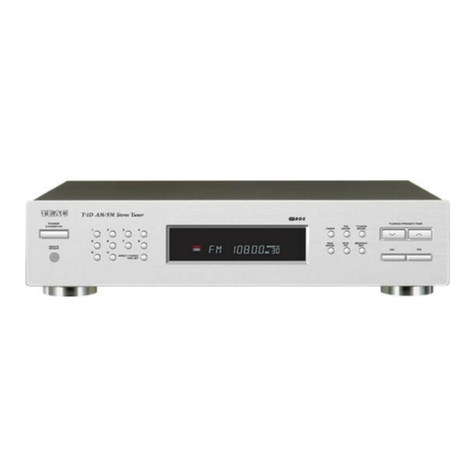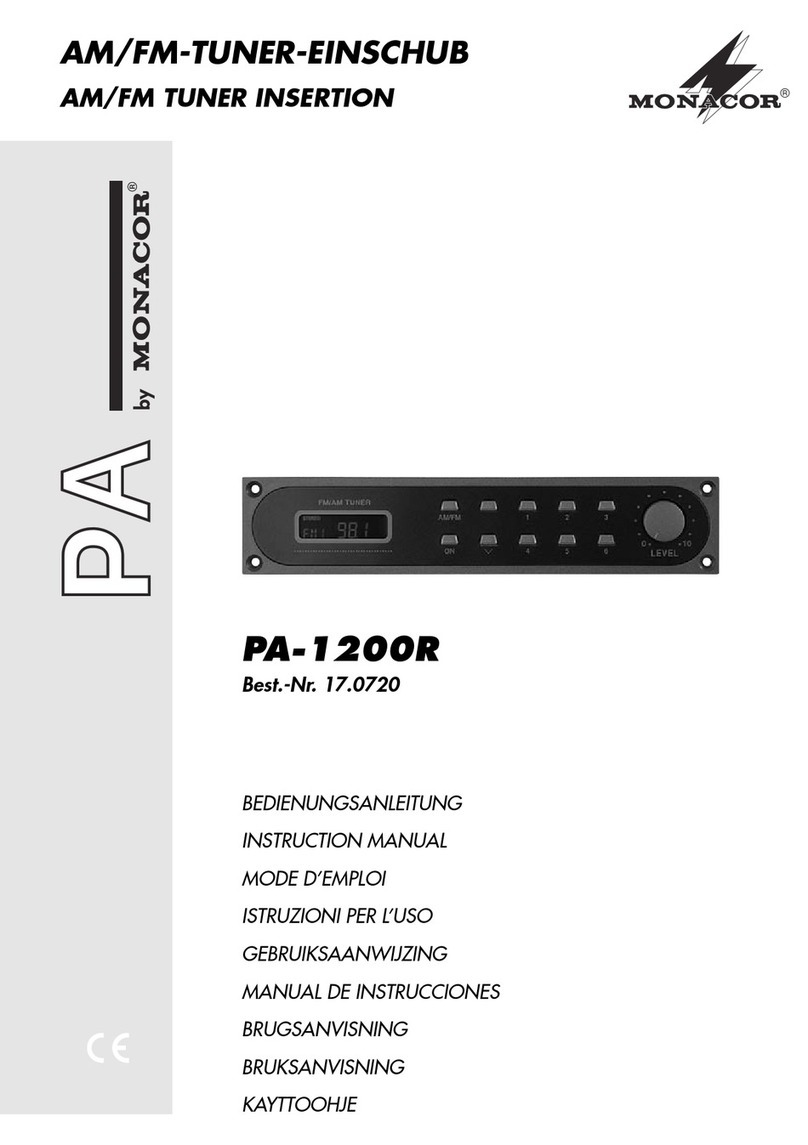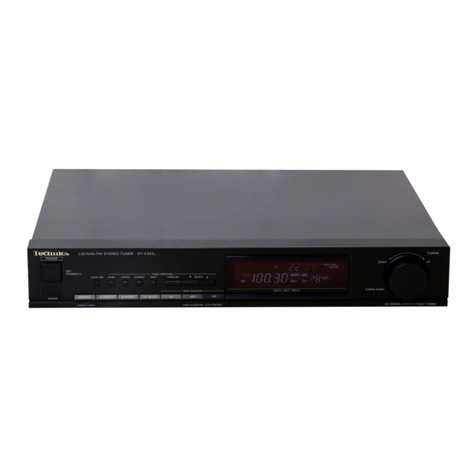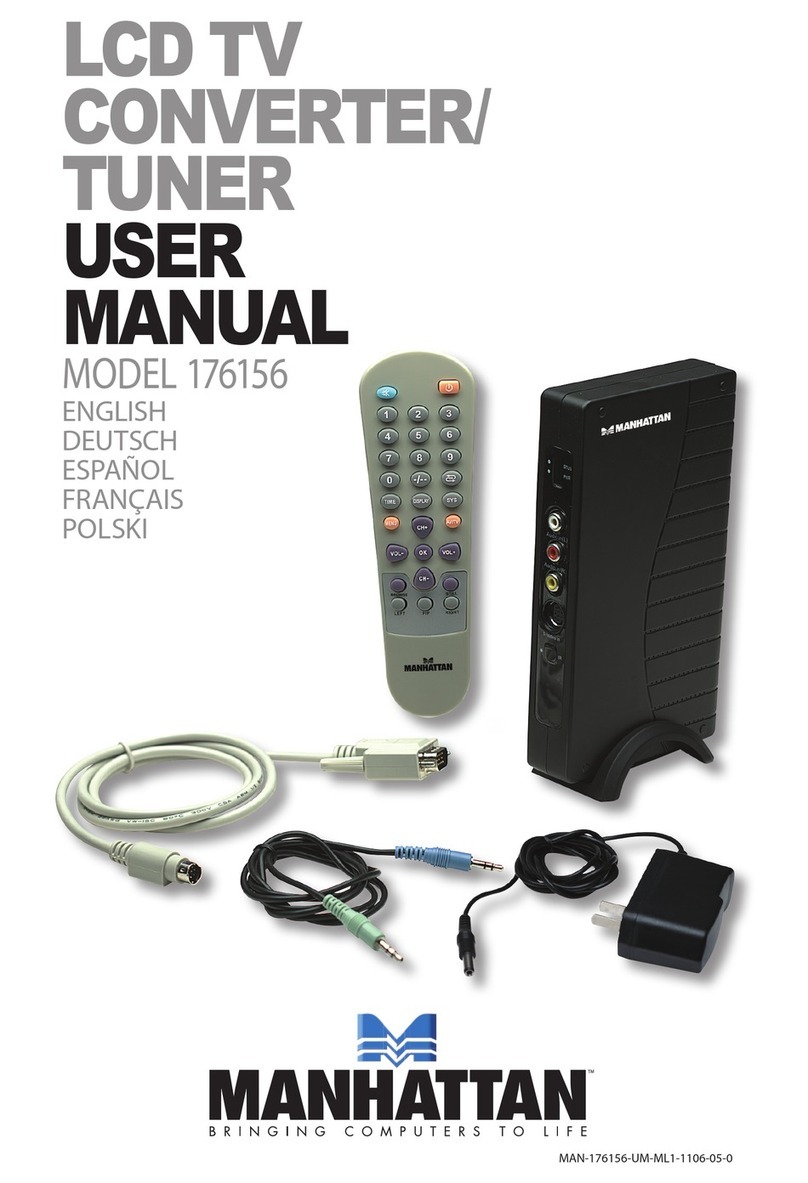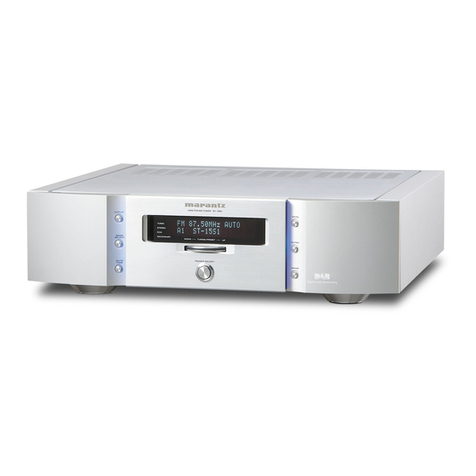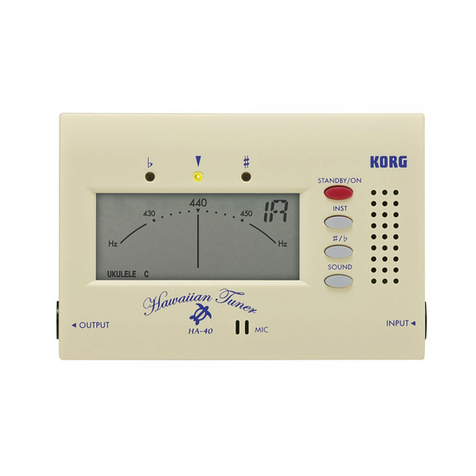. In the normal position, this switch enables the
manual tunin control knob for selection of stations. The remainin
four positions of the switch enable the four pre-set stations. As
the switch is moved to each position it uncovers the associated
pre-set. These pre-sets can be turned to particular stations by
turnin them with a small screwdriver or trimmer.
4.2.3. Mutin Switch
. This switch enables the mutin circuit, which mutes
the tuner output for very weak si nals so that inter-station hiss
is not heard. When it is set to OFF all si nals are fed to the
output re ardless of their quality. If the switch is set to ON when
the SFM2 is tuned more than 40KHz from a station centre frequency the
output will be muted in this mode. The Tuner is muted at any time that
the 'ON Channel' LED is extin uished. Due to the narrow tunin window
for each station with Mute ON, we recommend that tunin is carried out
very slowly to avoid over shootin station centres.
4.2.4. Stereo/Mono Switch. This switch is normally set to STEREO position
which enables stereo stations to be received if they are of a suitable
si nal stren th; durin reception of MONO si nals (havin no 19KHz
Stereo Pilot Tone) the tuner automatically reverts to the mono mode.
The centre position is STEREO BLEND which reduces the noise level when
a stereo si nal is received but at the expense of some stereo
separation. The third position is MONO. When the switch is set at
MONO it is not possible to receive any pro rammes in stereo. Note that
adequate reception of stereo pro rammes requires a much lar er si nal
than that necessary for ood mono reception.
4.2.5. De-emphasis Switch. In the normal position of this switch the de-
emphasis time constant is set to that suitable for the area in which
the tuner is used. In the second position the de-emphasis is
recommended whenever Dolby* encoded si nals are received and enables
the si nal of the correct frequency content to be fed to an external
Dolby type B decoder.
4.2.6. AFC Switch. This switch, the automatic frequency control switch, is
normally set to OFF when the tune control is operated. Once the station
has been selected, settin the switch to ON activates the circuit which
automatically holds the tuner onto the selected station and
compensates for sli ht manual mis-tunin or any tendency for the tuner
to drift off the station.
4.2.7. Tunin Control . This manual tunin control is a ten-turn rotary
potentiometer which sets the tuner to receive any frequency on the VHF
band from 88 Me ahertz to 108 Me ahertz.
4.2.8. Preset Volume Controls. (Located on the rear panel). These are used to
match the audio output of the tuner to the inputs of ancillary
equipment such as amplifiers or tape recorders.
* Trademark of Dolby Laboratories Inc.
